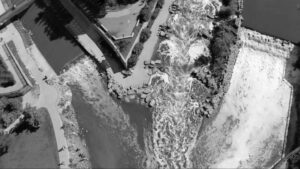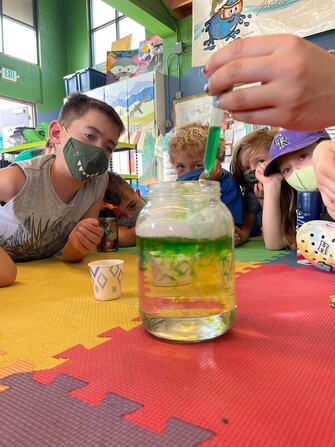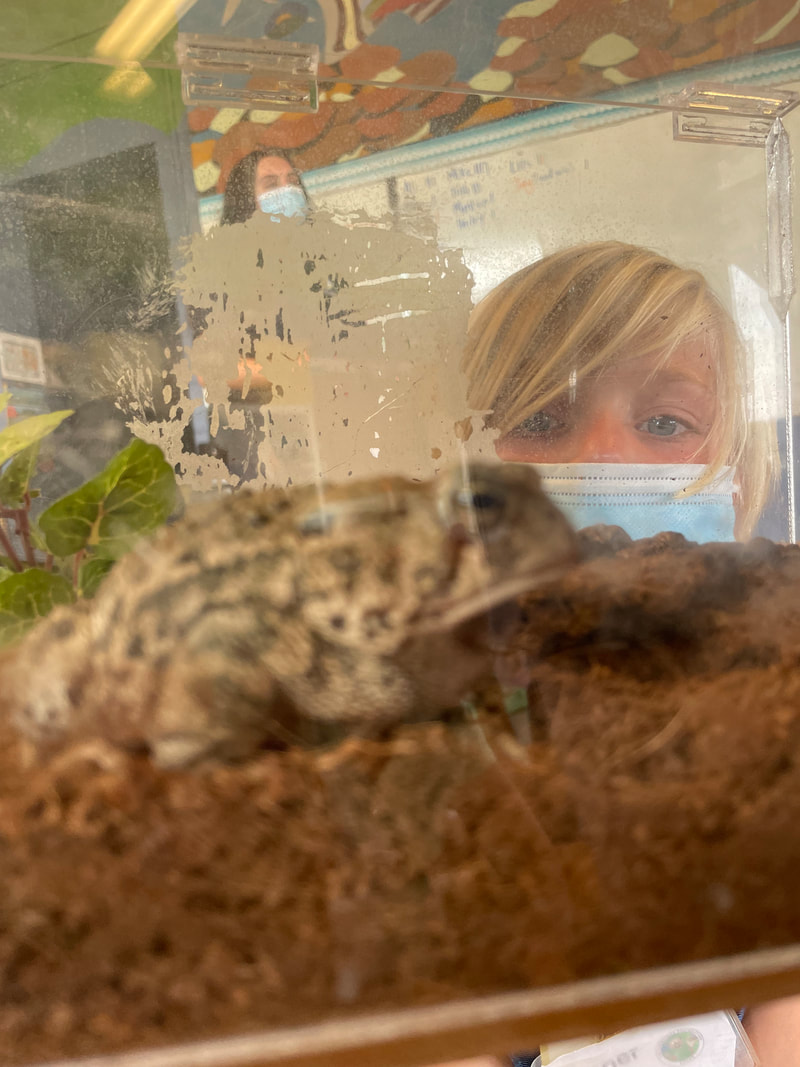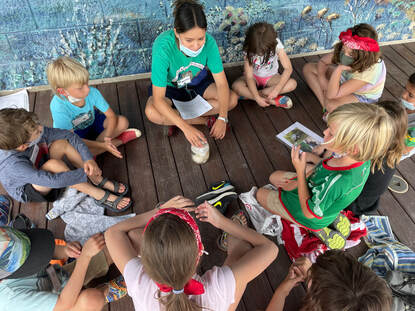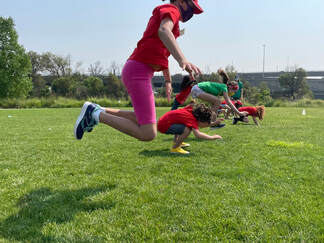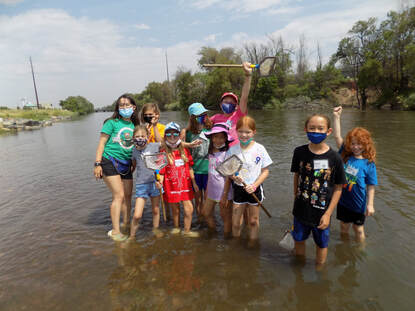|
Geology, meteorology, chemistry, and more! We got to wear so many scientist hats at camp last week!
On Monday, we wore our geologist hats to explore the rocks around HQ. We began the day with a rock-paper-scissors competition game to learn about and bond with our fellow campers. Our second activity of the day was critter crawl. Critter crawl is an activity we do every day of camp where we get into the South Platte River and catch the small macroinvertebrates, like crawdads, that live along the river’s bottom. During Monday’s critter crawl, we focused not just on the animals that live in the river, but also observing the rocks in the river and out of the river. We learned about how water weathers rocks, and changes the shape and texture of rocks over time. |
|
On Tuesday, we had an awesome special guest come to camp with living herps! Nature Educators came to camp to present their “Radical Reptiles” program. We learned about the adaptations that are special to Colorado herps, as well as the food they eat, and how they survive in our extreme environments of Colorado. We got to meet some really cool animals like a ball python, a bull snake named Peaches, a wood toad, a colorful collared lizard, and even the state amphibian, a tiger salamander.
During critter crawl, we learned about the types of food that reptiles & amphibians eat. After discussing herp diets, we realized that our Colorado herps eat a lot of the macroinvertebrates that live in our River! Sometimes they eat them in the river, but sometimes they wait until the macros grow up and live out of the water as adults. So we went on a macro food hunt when we did critter crawl! |
|
Wednesday’s theme was focusing on the life cycle of reptiles & amphibians. We began with experiments to explore herp skin. We compared reptiles & amphibians’ skin because they are much different. We “molted” our reptile skin with glue, and created amphibian slime from cornstarch. A few messy experiments, but so fun!
Before critter crawl, we learned about how herps reproduce. Both reptiles and amphibians lay eggs but those eggs are very different! We created some pretend amphibian eggs with chia seeds to feel the texture of what amphibian eggs, like frogs, feel like. We also observed a chicken egg that we transformed into a mock reptile egg with vinegar. We then went out to critter crawl, and again looked for any tadpoles! |
|
Thursday’s field day theme was ectotherms. Herps are ectothermic, which means they get their body heat from an outside source, so we spent the day in the sun playing games! We played water games like lily pad splash and drip-drip-drop (like duck duck goose), pretended to be frogs in a frog relay and jumping contest, and more!
|
|
Friday is the best day of camp! Our herps live in extreme conditions in Colorado: high heat, droughts, snow conditions, and even pollution. We started the day with an experiment activity. Campers created a frog out of a plastic cup, and had to survive pollution in their frogs’ water. Most of our campers were luckily able to survive, but real amphibians in real pollution may not be so lucky. |
found a variety of species that tolerate different levels of pollution. This showed us that we have a relatively healthy and unpolluted river, especially for an urban water space.

